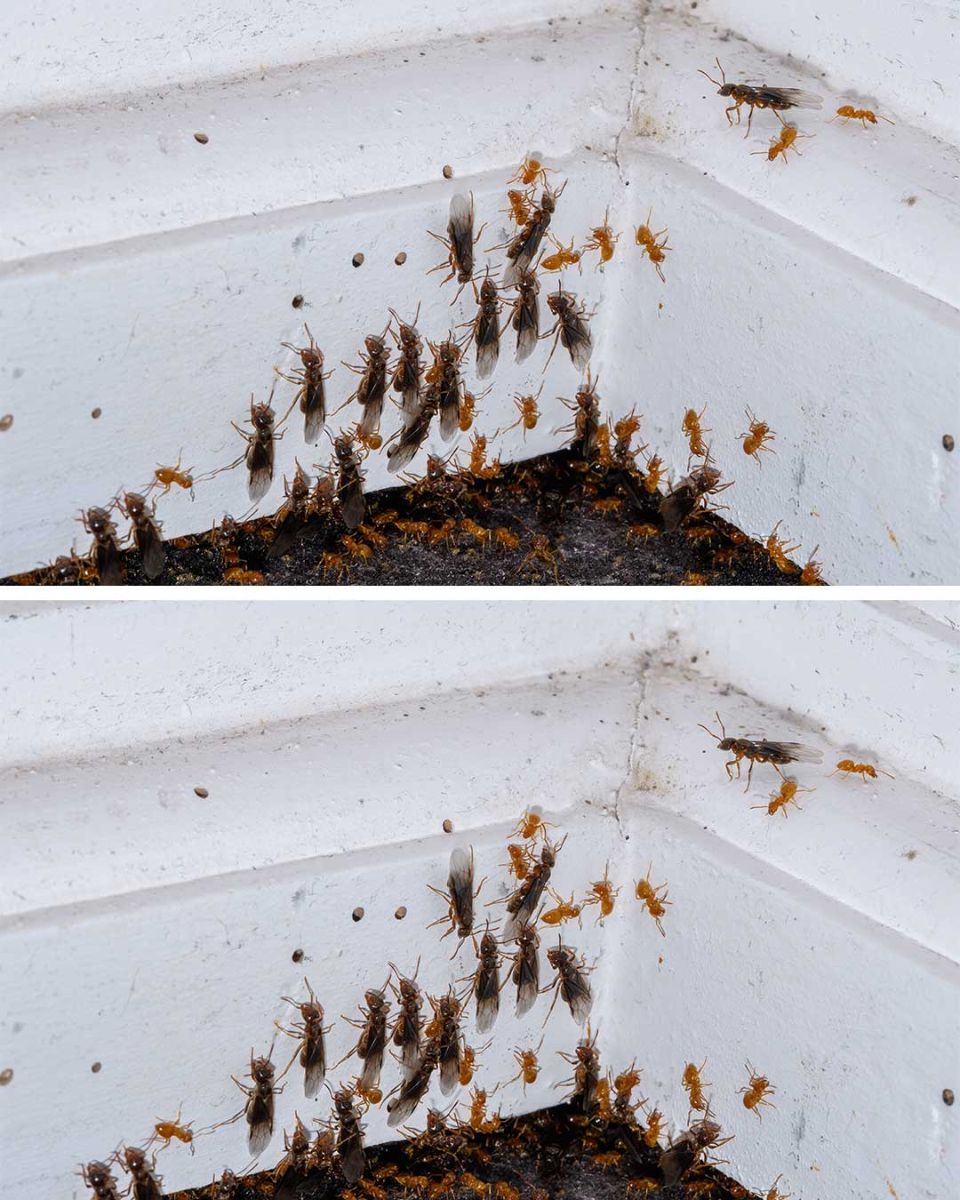ADVERTISEMENT
**Found Flying Ants in Your House? Here’s What You Should Do and How to Get Rid of Them**
Finding flying ants in your home can be a surprising and unsettling experience. These pests are often mistaken for termites due to their similar appearance, but they are actually a different species with distinct behaviors. Flying ants typically appear during mating season, but their presence can indicate an underlying problem with an infestation.
If you’ve spotted flying ants in your house, it’s important to act quickly to prevent them from causing damage or becoming a persistent problem. Here’s a guide on what you should do when you find flying ants and effective ways to eliminate them from your home.
—
### **Understanding Flying Ants:**
Flying ants are reproductive members of the ant colony, and their primary purpose is to mate and establish new colonies. These ants are usually seen in large numbers during a phenomenon called a **nuptial flight**, which typically occurs in late spring or summer. Flying ants are often attracted to light, so they may be found near windows, doors, or any light sources inside your home.
While flying ants themselves don’t pose a significant threat, the colony they belong to may be located nearby—sometimes even within your walls, attic, or under the foundation of your house. If the ants are getting inside your home, it’s a good sign that you have an active infestation.
—
### **Steps to Take Immediately:**
1. **Identify the Source:**
– Look for the entry point where the flying ants are getting into your home. This could be a crack in the wall, gaps around windows or doors, or even vents and chimneys.
– Check for signs of nests or ant trails leading to and from the area. If you notice large numbers of ants congregating in a particular spot, it’s likely the location of the colony.
2. **Remove the Flying Ants:**
– **Vacuum them up:** Use a vacuum cleaner to remove flying ants you see inside your house. Make sure to dispose of the vacuum bag or empty the canister immediately to prevent any ants from escaping.
– **Use sticky traps:** You can place flypaper or sticky traps near areas where you’ve spotted flying ants. These traps will help catch ants as they fly around the room.
– **Seal the entry points:** Close any windows or doors that might have been left open and check for gaps or cracks around the home that could serve as entry points.
—
### **How to Get Rid of Flying Ants:**
1. **Examine the Ant Nest:**
– Flying ants come from established colonies, so it’s essential to locate the source of the infestation. If you see a large number of ants swarming near a specific area, follow the ant trail to trace the nest.
– Look for signs of ants in hidden places like wall voids, attics, or under the house. Ant nests can sometimes be difficult to detect because ants prefer dark, secluded spaces.
2. **Use Ant Baits:**
– **Ant bait stations** are one of the most effective ways to eliminate flying ants. Place ant bait near the areas where you’ve seen activity. The worker ants will take the bait back to the colony, poisoning the queen and other ants over time.
– Choose baits designed specifically for the type of ant you’re dealing with. Some baits work better for carpenter ants, while others may be more effective for sugar ants or odorous house ants.
3. **Apply Ant Killer Sprays:**
– If you’ve identified the nest and can safely reach it, you can use an **ant killer spray** to eliminate the colony. These sprays are designed to kill ants on contact and can be applied directly to nests or trails.
– Be sure to follow the instructions on the product label for safe and effective use. Many sprays are not safe for use around children or pets, so take necessary precautions.
4. **Natural Remedies:**
– If you prefer a natural solution, there are several DIY remedies that can help deter flying ants:
– **Vinegar and water solution**: Mix equal parts vinegar and water in a spray bottle. Spray this solution directly on flying ants or around entry points to deter them.
– **Cinnamon**: Sprinkle cinnamon powder around areas where ants are entering. Ants dislike the strong smell, and it can act as a natural repellent.
– **Diatomaceous earth**: This is a non-toxic powder made from the fossilized remains of tiny organisms. It works by dehydrating and killing ants when they come into contact with it. Sprinkle it around areas where ants are entering your home.
For Complete Cooking STEPS Please Head On Over To Next Page Or Open button (>) and don’t forget to SHARE with your Facebook friends
ADVERTISEMENT
